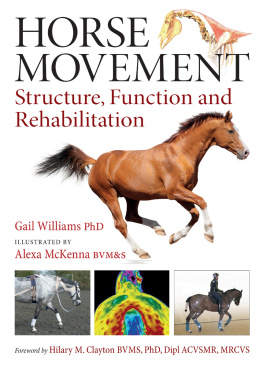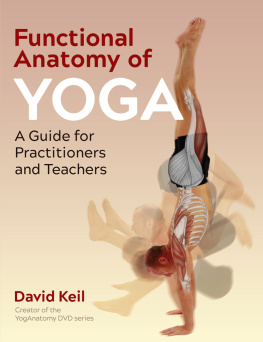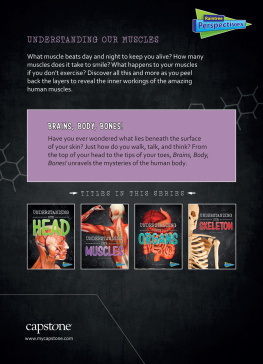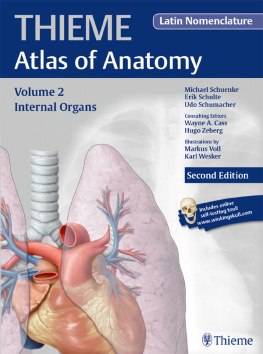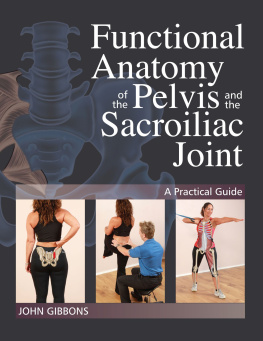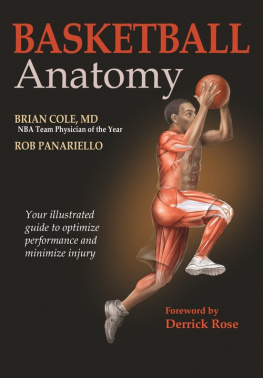HORSE MOVEMENT
Structure, Function and Rehabilitation
HORSE MOVEMENT
Structure, Function and Rehabilitation
Gail Williams BA (Hons) VPhys, PhD, MASSVAP, MIAVRPT
Illustrated by Alexa McKenna BVM&S
J.A. ALLEN
First published in 2014 by J.A. Allen, an imprint of
The Crowood Press Ltd, Ramsbury, Marlborough Wiltshire SN8 2HR
www.crowood.com
This impression 2016
This e-book first published in 2017
Gail Williams and Alexa McKenna 2014
All rights reserved. This e-book is copyright material and must not be copied, reproduced, transferred, distributed, leased, licensed or publicly performed or used in any way except as specifically permitted in writing by the publishers, as allowed under the terms and conditions under which it was purchased or as strictly permitted by applicable copyright law. Any unauthorised distribution or use of thistext may be a direct infringement of the authors and publishers rights, and those responsible may be liable in law accordingly.
British Library Cataloguing-in-Publication Data
A catalogue record for this book is available from the British Library.
ISBN 978 1 90880 968 1
The right of Gail Williams and Alexa McKenna to be identified as authors of this work has been asserted by them in accordance with the Copyright, Designs and Patents Act 1988.
Disclaimer of Liability
The author and publisher shall have neither liability nor responsibility to any person or entity with respect to any loss or damage caused or alleged to be caused directly or indirectly by the information contained in this book. While the book is as accurate as the author can make it, there may be errors, omissions, and inaccuracies.
Edited by Jane Lake
Contents
Useful websites
Gail Williams; www.gailwilliams.co.uk
Gail Williams Facebook page; www.facebook.com/Dr.Gail.Williams
ASSVAP (Association for the Scientific Study of Veterinary and Animal Physiotherapy); www.assvap.com
ASSVAP Facebook page; www.facebook.com/pages/assvap/244625052256925
ACE bandages can be obtained from ASSVAP (website as above)
International Symposium in Animal Musculoskeletal Practice (ISAMP); www.isamp.org
Publishers note
The carpus in the forelimb corresponds to the wrist in the human but is commonly, although incorrectly, called the knee. In this book we have bowed to common usage and called this joint the knee. The horses true knee is located in the hind limb.
Acknowledgments
We would like to say thank you to all the following for their invaluable contribution to this book.
Bates Saddles Australia; www.batessaddles.com
Centaur Biomechanics; www.centaurbiomechanics.co.uk
Equine Articulated Skeletons (Walter Varco); www.equineskeletons.com
Fairfax Saddles; www.fairfaxsaddles.co.uk
Hannah Ray for the photo of Sarah Stretton, bottom of
Helen Morrell of Surrey Vet Physio; www.surreyvetphysio.com
Kerry Millership of Friary Stables; www.friarystables.com
Marc Moggridge; www.burghleyimages.photoshelter.com
Naomi and Amber Franklin of Lazy Acres Event Team; www.lazyacresstables.co.uk
Nico Morgan for the photos of hind limb retraction on
Quintic Gait Analysis; www.quintic.com
Rebel Saddles; www.rebelsofsweden.co.uk
Sam Pawley Photography; www.photoboxgallery.com/ sampawleyphotography
Sarah Stretton of Stretton Eventing; www.sarahstrettoneventing.co.uk
Foreword by Hilary M. Clayton
BVMS, PhD, Dipl ACVSMR, MRCVS
Professor and Mary Anne McPhail Dressage Chair Emerita
President Sport Horse Science, LC
A S I MEANDERED THROUGH the pages of this book, the wisdom of the proverb an ounce of prevention is worth a pound of cure came to mind. The basic premise upon which the book is written is that many unsoundness issues of horses have an insidious onset involving a developmental stage when signs indicative of an impending problem can be recognised if the observer knows what to look for. Therefore, early recognition and appropriate therapy may avoid progression to an overt lameness or performance issue. The reader learns how to detect and interpret subtle, and not so subtle, changes in the horses posture and demeanor that may be a forewarning of a developing problem. An attractive feature of this book is that its punctuated throughout by interesting examples to illustrate the relevance of the factual information.
As prey animals, horses are adept at hiding the signs of pain from their predators but, if you learn what to look for, it is possible to detect many problems that lie in the grey area between soundness and lameness. The authors draw our attention to the importance of static (standing) and dynamic (locomotor) posture as valuable indicators of musculoskeletal pain or dysfunction that have, perhaps, not received sufficient emphasis in the past. Early identification of postural problems allows early treatment which can often prevent the progression of a minor injury into a full blown lameness problem.
Having been a teacher of veterinary anatomy for many years, I appreciated the functional anatomical approach; knowledge of muscle structure and function is the cornerstone upon which to build an understanding of equine movement and athletic performance. The text is enhanced by clear and beautifully drawn illustrations that are the work of the second author, veterinary surgeon Alexa McKenna. It is particularly informative to see the muscles displayed individually which facilitates the readers appreciation of each muscles attachments and actions. In addition, an ample number of good photographs illustrate various aspects of equine performance and performance evaluation techniques, including thermal images, pressure mapping and motion analysis.
Topical areas in research and practice, such as saddle fitting and hoof care, each occupy a full chapter and rightly so since these are two of the most important aspects of management to be addressed in caring for an athletic horse. As in other sections of the book, the reader is guided through the relevant anatomy and the chain of events that is set in motion by back pain or foot pain. It then becomes obvious why signs of dysfunction are often manifest in a different part of the body than the initiating cause.
Preventive and rehabilitative care are addressed by the use of passive and dynamic stretches and proprioceptive awareness techniques. The latter are used extensively in human physiotherapy, especially during athletic training and performance, and there is growing enthusiasm for their use in horses. The potential value of equine proprioceptive techniques lies in improving the horses awareness of body position and movements and in enhancing muscular activation and coordination, which are highly relevant both to athletic performance and to rehabilitation.
Congratulations to the authors for compiling a book that is both interesting to read and relevant to current training practices. The information herein will be useful for analysing, interpreting and improving the performance of our equine athletes.
April 2014
CHAPTER ONE
An Introduction to Functional Anatomy
S TRUCTURE . F UNCTION . Two completely ordinary, simple, everyday words. But when you are able to apply them to the way a horse moves, it will take you to a level of understanding that will empower you to increase his performance, resilience to injury and provide him with a pain free, active life.
Posture
A single word can indeed be substituted for structure and function: posture. But now you are probably thinking What has my horses posture got to do with anything? The answer is that it has everything to do with the way he stands, moves and performs. But even more importantly poor posture is significantly implicated in primary injury and secondary dysfunction in the horse.

